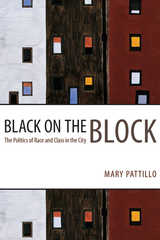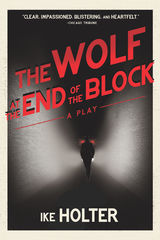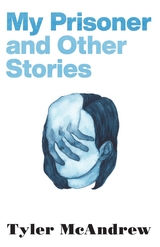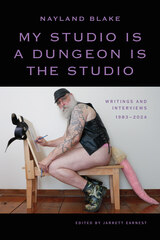4 books about Block

Black on the Block
The Politics of Race and Class in the City
Mary Pattillo
University of Chicago Press, 2007
In Black on the Block, Mary Pattillo—a Newsweek Woman of the 21st Century—uses the historic rise, alarming fall, and equally dramatic renewal of Chicago’s North Kenwood–Oakland neighborhood to explore the politics of race and class in contemporary urban America.
There was a time when North Kenwood–Oakland was plagued by gangs, drugs, violence, and the font of poverty from which they sprang. But in the late 1980s, activists rose up to tackle the social problems that had plagued the area for decades. Black on the Block tells the remarkable story of how these residents laid the groundwork for a revitalized and self-consciously black neighborhood that continues to flourish today. But theirs is not a tale of easy consensus and political unity, and here Pattillo teases out the divergent class interests that have come to define black communities like North Kenwood–Oakland. She explores the often heated battles between haves and have-nots, home owners and apartment dwellers, and newcomers and old-timers as they clash over the social implications of gentrification. Along the way, Pattillo highlights the conflicted but crucial role that middle-class blacks play in transforming such districts as they negotiate between established centers of white economic and political power and the needs of their less fortunate black neighbors.
“A century from now, when today's sociologists and journalists are dust and their books are too, those who want to understand what the hell happened to Chicago will be finding the answer in this one.”—Chicago Reader
“To see how diversity creates strange and sometimes awkward bedfellows . . . turn to Mary Pattillo's Black on the Block.”—Boston Globe
“To see how diversity creates strange and sometimes awkward bedfellows . . . turn to Mary Pattillo's Black on the Block.”—Boston Globe
[more]

Cash on the Block
The Broken Promise of Reinvestment in Black Urban Neighborhoods
Beryl Satter
Harvard University Press

The Last House on the Block
Black Homeowners, White Homesteaders, and Failed Gentrification in Detroit
Sharon Cornelissen
University of Chicago Press, 2025
Gentrification is not inevitable, reveals Sharon Cornelissen, in this surprising, close look at the Detroit neighborhood of Brightmoor and the harsh reality of depopulation and urban decline.
In the minds of many, Detroit is undergoing a renaissance thanks to gentrifying urbanites who’ve been drawn to the city with the promise of cheap housing and thriving culture. But what happens when gentrification attempts to come to one of the most depopulated neighborhoods in the country—a place where every other property in the neighborhood was a vacant lot and every third house stood empty? To find out, Sharon Cornelissen moved to the Brightmoor neighborhood of Detroit for three years and became the owner of a $7,000 house.
The Last House on the Block takes us to Brightmoor to meet Cornelissen’s fellow residents. She introduces us to the long-time residents of the neighborhood who reveal their struggles to keep a home while keeping violence, tall grass, and yes—gentrification—at bay. We also meet the eclectic white newcomers of Brightmoor and learn about their real estate bargains, urban farms, and how they became the unlikely defenders of urban desolation. Where oldtimers take pride in neatly mowed lawns and hope for a return to residential density, newcomers love the open space and aim to buy more empty lots to raise chickens and goats. It is a story of gentrification, but not at all in the usual sense: it is a case of failed gentrification. We often think about gentrification as an unstoppable force—once the first white newcomers with yoga mats enter an often brown or Black community, the coffee shops and restaurants follow. But in Brightmoor, the dreams of white newcomers met the harsh reality of decade-long decline. Nearly a decade after Cornelissen’s fieldwork began, Brightmoor is even emptier than it was when she started.
Today, depopulation remains more common than gentrification in poor communities. Cornelissen’s story offers deep insights into what it is like to live in a declining neighborhood, and through the example of Brightmoor, Cornelissen reveals why depopulation continues and helps us imagine a more inclusive and equitable city turnaround.
In the minds of many, Detroit is undergoing a renaissance thanks to gentrifying urbanites who’ve been drawn to the city with the promise of cheap housing and thriving culture. But what happens when gentrification attempts to come to one of the most depopulated neighborhoods in the country—a place where every other property in the neighborhood was a vacant lot and every third house stood empty? To find out, Sharon Cornelissen moved to the Brightmoor neighborhood of Detroit for three years and became the owner of a $7,000 house.
The Last House on the Block takes us to Brightmoor to meet Cornelissen’s fellow residents. She introduces us to the long-time residents of the neighborhood who reveal their struggles to keep a home while keeping violence, tall grass, and yes—gentrification—at bay. We also meet the eclectic white newcomers of Brightmoor and learn about their real estate bargains, urban farms, and how they became the unlikely defenders of urban desolation. Where oldtimers take pride in neatly mowed lawns and hope for a return to residential density, newcomers love the open space and aim to buy more empty lots to raise chickens and goats. It is a story of gentrification, but not at all in the usual sense: it is a case of failed gentrification. We often think about gentrification as an unstoppable force—once the first white newcomers with yoga mats enter an often brown or Black community, the coffee shops and restaurants follow. But in Brightmoor, the dreams of white newcomers met the harsh reality of decade-long decline. Nearly a decade after Cornelissen’s fieldwork began, Brightmoor is even emptier than it was when she started.
Today, depopulation remains more common than gentrification in poor communities. Cornelissen’s story offers deep insights into what it is like to live in a declining neighborhood, and through the example of Brightmoor, Cornelissen reveals why depopulation continues and helps us imagine a more inclusive and equitable city turnaround.
[more]

The Wolf at the End of the Block
A Play
Ike Holter
Northwestern University Press, 2020
Taut and fast-paced, The Wolf at the End of the Block tells the story of Abe, a resident of the Rightlynd neighborhood of Chicago, who seeks justice after a mysterious, late-night interatction at a boarded-up bar. The intrigue envelops Abe, his sister, his boss, and a morally complicated reporter in pursuit of the truth. But as the clock ticks down, the play discloses the hidden motives of each character, leading to a finale of unpredictable twists, turns, and reveals.
A modern-day neo-noir, The Wolf at the End of the Block remixes several different genres to present a new kind of thriller that is socially conscious, relentlessy suspenseful, and bitingly funny. Praised for its power and grace, the play is one of Holter’s most unforgettable.
The Wolf at the End of the Block is one of seven plays in Holter’s Rightlynd Saga, set in Chicago’s fictional fifty-first ward. The other plays in the cycle are Rightlynd, Exit Strategy, Sender, Prowess, Red Rex, and Lottery Day.
A modern-day neo-noir, The Wolf at the End of the Block remixes several different genres to present a new kind of thriller that is socially conscious, relentlessy suspenseful, and bitingly funny. Praised for its power and grace, the play is one of Holter’s most unforgettable.
The Wolf at the End of the Block is one of seven plays in Holter’s Rightlynd Saga, set in Chicago’s fictional fifty-first ward. The other plays in the cycle are Rightlynd, Exit Strategy, Sender, Prowess, Red Rex, and Lottery Day.
[more]
READERS
Browse our collection.
PUBLISHERS
See BiblioVault's publisher services.
STUDENT SERVICES
Files for college accessibility offices.
UChicago Accessibility Resources
home | accessibility | search | about | contact us
BiblioVault ® 2001 - 2025
The University of Chicago Press









